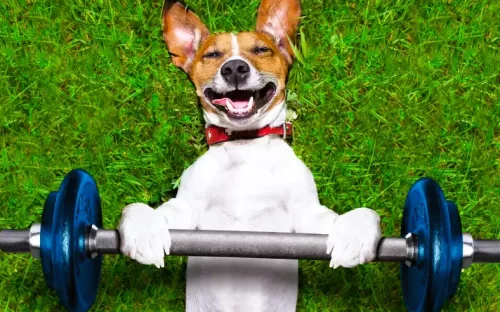As an owner of a Beagle, you’ve probably realized by now that these adorable, floppy-eared dogs have boundless energy and an insatiable curiosity. Beagles, originally bred for hunting, are known for their exceptional sense of smell and love of exploration.
Meeting their exercise needs is not only essential for their physical health but also for their mental wellbeing. In this article, we’ll dive into the world of Beagle exercise, offering tips, tricks, and activities to keep your four-legged friend entertained, healthy, and happy!
The Importance of Exercise for Beagles
Physical Health: Regular exercise helps maintain a healthy weight, improves cardiovascular fitness, and strengthens muscles and joints. Beagles are prone to obesity, so physical activity is crucial to keep them in good shape.
Mental Stimulation: Beagles are intelligent dogs that require mental challenges to prevent boredom and undesirable behaviors like excessive barking or destructive chewing.
Socialization: Exercise activities, such as walks or dog park visits, provide opportunities for your Beagle to socialize with other dogs and humans, which is vital for their overall development and happiness.
How Much Exercise Does a Beagle Need?
Puppies: Beagle puppies have lots of energy but should not be overexerted, as their growing bodies are still developing. Aim for 5 minutes of exercise per month of age, up to twice a day.
Adult Beagles: Adult Beagles typically require at least an hour of exercise per day, which can be split into multiple sessions. Some Beagles may need more or less depending on their age, health, and individual temperament.
Senior Beagles: Older Beagles may experience a decrease in energy levels and may require shorter, less strenuous exercise sessions to accommodate their changing needs.
Fun and Engaging Exercise Activities for Beagles
Walking and Hiking: Beagles love to explore and follow their noses, making walking and hiking excellent activities for them. Keep your Beagle on a leash to prevent them from following scents and getting lost.
Fetch and Tug-of-War: These classic dog games provide physical exercise and mental stimulation. Beagles may not be natural retrievers, but with a little encouragement and patience, they can learn to love fetch.
Dog Parks and Playdates: Socializing with other dogs at a dog park or arranging playdates with canine friends can offer both physical activity and valuable social interactions for your Beagle.
Scent Games and Nose Work: Beagles are scent hounds, so engaging their powerful sense of smell with scent games or nose work activities can provide mental stimulation and a sense of accomplishment.
Training and Mental Stimulation for Beagles
Obedience Training: Training your Beagle in basic commands, such as sit, stay, and come, provides mental stimulation and strengthens the bond between you and your furry friend.
Agility and Canine Sports: Beagles may enjoy participating in agility courses, flyball, or other canine sports, which offer physical exercise and an opportunity to showcase their intelligence and energy.
Puzzle Toys and Interactive Feeders: Using puzzle toys or interactive feeders can challenge your Beagle’s problem-solving skills and keep them mentally engaged during mealtimes.
Tips for Exercising Your Beagle Safely
Weather Considerations: Be mindful of extreme temperatures, as Beagles can overheat in hot weather or become chilled in cold conditions. Adjust your exercise routine accordingly and provide ample water.
Leash Safety: Due to their strong sense of smell and innate drive to follow scents, Beagles should be kept on a leash during walks or hikes to prevent them from wandering off and getting lost. A harness can provide better control and reduce the risk of injury to your Beagle’s neck.
Regular Checkups: Ensure your Beagle has regular veterinary checkups to address any health concerns that may impact their ability to exercise safely.
Know Your Beagle’s Limits: Pay attention to your Beagle’s body language and behavior to avoid overexertion or injury. If they show signs of fatigue, such as panting heavily or lagging behind, it’s time to take a break or end the exercise session.
Making Exercise a Part of Your Beagle’s Daily Routine
Consistency: Establishing a consistent exercise routine helps your Beagle know what to expect and makes it easier for them to burn off their energy in a constructive way.
Mix It Up: Keep your Beagle engaged and excited about exercise by incorporating a variety of activities into their routine. This will help prevent boredom and keep both of you motivated.
Make It Fun: The key to successful exercise is making it enjoyable for both you and your Beagle. Be enthusiastic, offer praise, and use positive reinforcement to encourage your furry companion.
Conclusion
Exercise is an essential component of a Beagle’s overall wellbeing, contributing to their physical health, mental stimulation, and socialization. By understanding their exercise needs and providing a variety of fun and engaging activities, you can ensure your Beagle remains happy, healthy, and well-adjusted. Remember, a tired Beagle is a well-behaved Beagle, so grab that leash and let the adventures begin!



